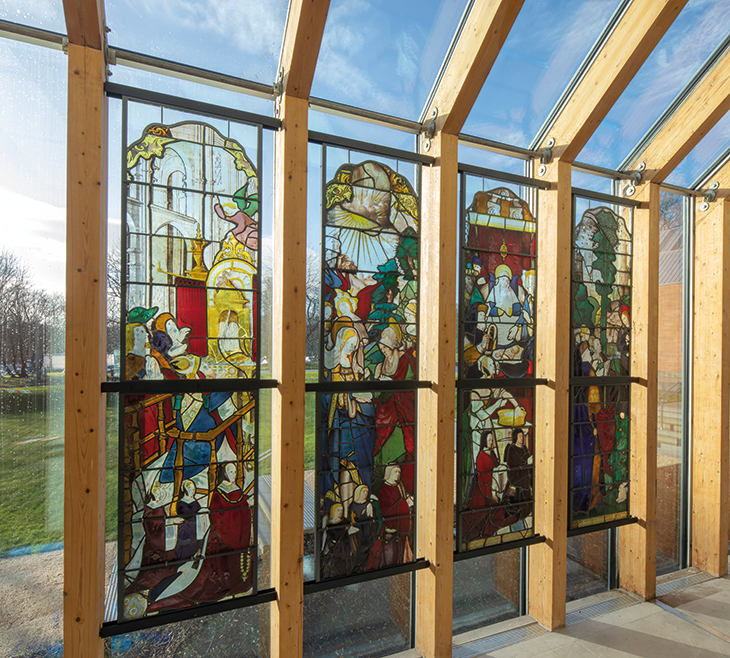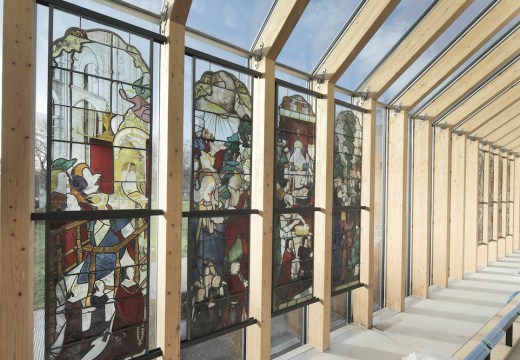There are long queues at the Gallery of Modern Art (GoMA) in Glasgow as the crowds make their way into ‘Banksy: Cut and Run’, the artist’s first official exhibition in 14 years. When the show was announced, Susan Aitken, the leader of the city’s council, said that it ‘might be the perfect partnership of artist, gallery and host city’. Curators working for Glasgow Life, however, are beginning to question whether the notion of Glasgow as a ‘host city’ for art may soon be consigned to memory. In an effort to save £1.5m from the museums’ budget, Glasgow Life, the charitable body that manages museums on behalf of Glasgow City Council, is seeking to cut 37 posts out of a total of 128.
Eyes are turning to the Burrell Collection, which reopened last year after a five-year refurbishment that cost £65m. Housed in a modern building in Pollok Country Park, on the city’s south side, it is Sir William Burrell’s greatest gift to Glasgow. The will in which he donated his collection to the city famously prohibited the loan of items outside Britain, but an act passed in the Scottish parliament revoked this stipulation.
The change, which had the support of the Burrell trustees, was to allow ‘a one-off tour’ to ‘increase awareness of the collection’ and provide ‘fund-raising opportunities in the future’ through ‘exhibitions based around reciprocal loans into the Burrell Collection’. As Bridget McConnell, then-chief executive of Glasgow Life, put it in an interview with Apollo last year: ‘Let me be clear – that’s why we changed the will. It was about reciprocity with world museums and researchers so that we could share the intellectual capital we both have.’
A year on, McConnell has retired, and Glasgow Life has had its ‘service fee’ slashed by the council, as part of measures designed to plug a shortfall of £49.3m in the City Chambers’ budget. At the pristine Burrell, which contrasts sharply with the dilapidated state of many Glasgow Life properties, it is – for the public at least – still business as usual. Loud school groups jostle for space with tourists and local residents, whose consistent complaint is that the descriptions of the art are written for children. Glasgow Life insists that the ‘careful and considered care’ exercised currently will continue in spite of the cuts, and that ‘any lending of objects from The Burrell Collection would be delivered as part of our ongoing service programme’.
But Unison, the trade union that represents Glasgow Life’s museums workforce finds this hard to believe. ‘The curators, the conservation, that team – these are the guys that are being hammered,’ says Chris Robertson, the union’s convener at Glasgow Life. ‘Frontline staff, the general public won’t see anything – but the backroom staff […], they don’t see how the teams that are going to be left over in this exercise can possibly maintain the collections that we have.’
The posts under threat include loans and touring personnel and collections staff. Unison’s forecast is stark. It predicts a 50 per cent reduction in the renewal of long-term loans and no capacity for putting on smaller exhibitions at all. Other functions crucial to staging exhibitions, such as stock-checking and moving collections from one venue to another, could be hit even harder. ‘We’re chronically understaffed in roles like technicians and conservators, they’re chronically overworked and work across multiple buildings,’ says one Glasgow Museums employee, who asks not to be named. ‘[The cuts are] only going to exacerbate the situation.’

Four stained-glass panels from a group of eight depicting scenes from the life of John the Baptist, made in Rouen in c. 1510 and installed in the south wall of the Burrell Collection, Glasgow. Photo: Alan McAteer Photo: Alan McAteer
As for Glasgow Life’s ambitions to leverage the Burrell Collection, this staff member is not impressed. ‘I think from a staffing perspective… it’s almost frustrating to see those goals to “put Glasgow on the map” when there’s so many things that currently need to be taken care of. It feels very much like the people in charge are out of touch with how the museums operate and what they actually need. The morale is fairly low – there’s a real atmosphere of stress and uncertainty, particularly with the back-of-house team.’
Glasgow Life – an ‘arms’-length external organisation’ (ALEO) – was created by the city council to gain tax relief on non-domestic rates and VAT through charity status. Glasgow’s financial pressures have been particularly acute thanks to a discriminatory pay system going back decades: next month the city will pay women workers, many of them carers and cleaners, a second tranche of compensation payments, bringing the total bill to £730m. But the wider context is austerity – during which the ALEO model provided a lifeline for council leisure services. But as budgets decline further, culture loses out against social care and schools – and thanks to the ‘arms’-length’ arrangement, cuts are no longer subjected to the same democratic scrutiny.
‘That was the sole purpose of setting up Glasgow Life as an entity, to save that additional money for Glasgow,’ Robertson says. But there is a wider question that applies across the UK: should museums that have national appeal be funded through the budget of a single council? ‘Glasgow doesn’t get additional funding from the Scottish Government to maintain national services or national buildings,’ Robertson adds, ‘so that’s the core problem there.’
Another issue, the Glasgow museums worker says, is the failure of Glasgow Life to nurture talent in the collections workforce. ‘Because we’re currently understaffed, there’s a lot of specialist roles where we’re only 10–15 years away from a large percentage of this workforce retiring, and there’s no young people being trained up to take over. Glasgow Life often takes on modern apprentices, but there’s no roles for them to go into when their apprenticeships end. There’s no career progression apart from into management.’
Glasgow Life says it has sought to make savings ‘by reducing, rather than losing, Glasgow Life services, programmes and events, retaining the potential to rebuild them in the future’. A statement issued by the body says that ‘more than half of the Glasgow Life museums posts affected by these savings measures are vacant’. That might mean fewer existing staff losing their jobs, but it suggests that making major international loans is still a distant prospect for Glasgow – with or without these cuts.
3/7/23: This piece has been updated to reflect the fact that the compensation payments from the city will amount to £730m and not £1.3bn as previously stated.
Unlimited access from just $16 every 3 months
Subscribe to get unlimited and exclusive access to the top art stories, interviews and exhibition reviews.














![Masterpiece [Re]discovery 2022. Photo: Ben Fisher Photography, courtesy of Masterpiece London](http://www.apollo-magazine.com/wp-content/uploads/2022/07/MPL2022_4263.jpg)
It’s time for the government of London to return to its rightful home